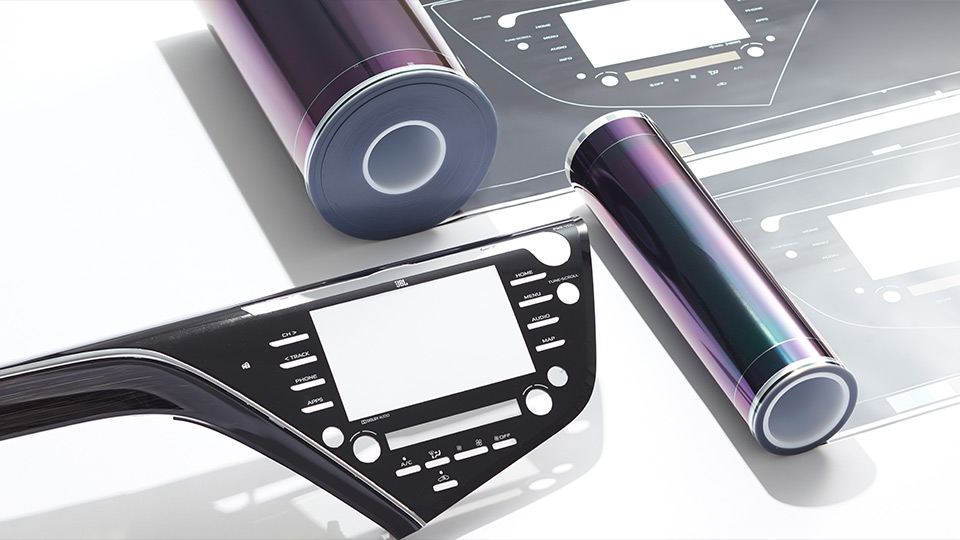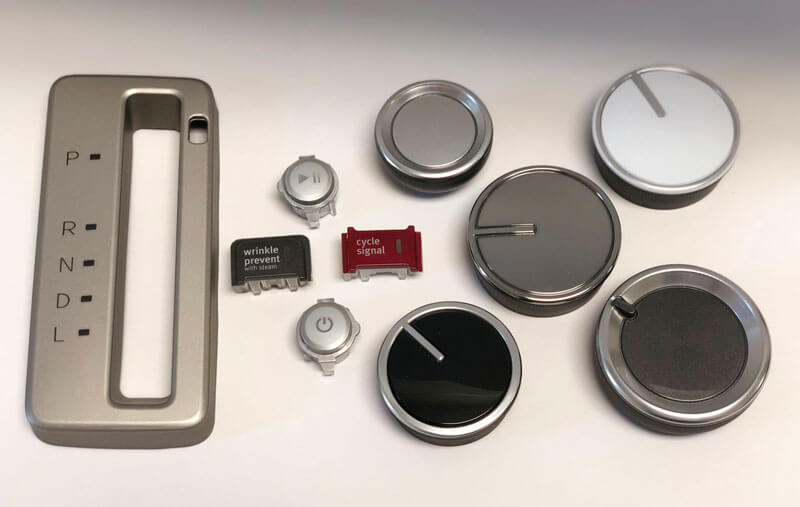The Evolution of In-Mold Decorations in Manufacturing Processes
The Evolution of In-Mold Decorations in Manufacturing Processes
Blog Article
Mastering In-Mold Decorations: Approaches, Trends, and Ideal Practices for Optimum Results
In the realm of manufacturing, the art of in-mold designs stands as a crucial facet of item layout and manufacturing. In-Mold Decorations. By diving right into the approaches, fads, and ideal practices that underpin successful in-mold decoration processes, services can open a world of opportunities that not only raise the aesthetic appeal of their products but also streamline production performance and strengthen customer involvement.
Product Choice
Material selection is an important element of grasping in-mold designs, as it directly impacts the top quality and durability of the last item. When selecting materials for in-mold decorations, it is essential to consider variables such as compatibility with the molding process, the preferred aesthetic result, and the ecological conditions the item will certainly encounter. Polycarbonate materials like polypropylene, polycarbonate, and abs are frequently used for in-mold decorations as a result of their adaptability and capability to achieve detailed styles. These materials use outstanding moldability, enabling makers to create intricate shapes and patterns with accuracy.
In addition, products with high warmth resistance are favored for in-mold decors, specifically for items that will certainly be subjected to raised temperature levels during their lifecycle. By very carefully picking the appropriate product for in-mold decors, manufacturers can improve the general high quality and toughness of their items, satisfying the assumptions of both end-users and clients - In-Mold Decorations.
Design Development
A vital element in advancing the field of in-mold decors is the continual expedition and application of design innovation strategies. Layout advancement plays a vital function in enhancing the visual allure, performance, and overall quality of items produced using in-mold decor processes. By incorporating cutting-edge layout aspects, manufacturers can separate their items in the market, bring in customers, and stay in advance of rivals.
One of the vital elements of design technology in in-mold designs is the integration of intricate patterns, textures, and graphics that were formerly challenging to achieve with typical design methods. Advanced innovations such as 3D printing and digital style tools allow designers to produce complex and in-depth designs that can be effortlessly transferred onto shaped components. Additionally, making use of dynamic shades, metallic surfaces, and unique effects like gloss or matte appearances can further raise the aesthetic appeal of in-mold embellished items.
Additionally, layout development prolongs past aesthetic appeals to incorporate functional improvements such as ergonomic forms, integrated functions, and customizable aspects that deal with particular customer needs. By welcoming design technology, producers can unlock brand-new opportunities for product, personalization, and imagination distinction in the affordable landscape of in-mold decors.
Manufacturing Performance
Efficient production processes are necessary for converting the cutting-edge layouts created in the area of in-mold decors right into high-quality finished products that fulfill market needs and customer assumptions. In the world of in-mold designs, manufacturing effectiveness includes different essential aspects that add to the overall success of the production procedure. One critical component is the optimization of mold and mildew style and tooling to make sure smooth and exact decor transfer onto the end product. By fine-tuning mold setups Visit Your URL and investing in premium tooling materials, manufacturers can enhance performance and uniformity in manufacturing.
Additionally, carrying out automation and robotics in the production line can significantly enhance efficiency by simplifying repeated jobs and minimizing the margin of error. Automation not just accelerates the manufacturing process however also improves precision and repeatability, bring about a more top quality and consistent end product. Taking on lean manufacturing principles, such as just-in-time supply monitoring and waste reduction methods, this content can further improve manufacturing performance by minimizing downtime and enhancing source application. Overall, an alternative strategy to manufacturing efficiency is critical in taking full advantage of the possibility of in-mold decoration techniques and achieving ideal lead to the open market landscape.
Quality Control Measures
What are the essential strategies for making sure stringent top quality control steps in the world of in-mold decorations? Quality control steps are extremely important in in-mold decor processes to make sure the production of top quality and remarkable finished products.
Making use of advanced modern technologies such as automated examination systems can also boost the quality assurance process by giving dependable and precise information for analysis. These systems can find blemishes that may be missed by hand-operated inspections, thus enhancing total product quality and consistency.

Normal training and development programs for workers included in the in-mold decor procedure can also contribute to preserving high-grade standards. By informing personnel on best methods, top quality assumptions, and the relevance of attention to detail, companies can promote a society of top quality awareness throughout the company.
Consumer Charm
To enhance the bankability of in-mold design items, providing and comprehending to customer preferences play a vital duty in identifying their allure and success. Using personalization alternatives such as individualized designs, shade variations, and textural components can considerably boost the charm of in-mold decor products.

Final Thought
In-mold decors supply a functional and effective means to improve product aesthetic appeals. Mastering in-mold decors calls for an alternative method that considers all facets of the manufacturing process to make certain success.
In the world of manufacturing, the art of in-mold decorations stands as a crucial element of product layout and production. Design innovation plays a critical function in enhancing the aesthetic allure, performance, and overall quality of items produced using in-mold decor processes.One of the vital elements of design technology in in-mold designs is the integration of detailed patterns, structures, and graphics that were previously testing to achieve with traditional decor approaches.Efficient manufacturing processes are important for translating the innovative layouts developed in the area of in-mold designs right into top quality finished products that fulfill market demands and consumer assumptions. Offering personalization alternatives such as customized layouts, color variations, and textural components can significantly improve the allure of in-mold decoration products.
Report this page